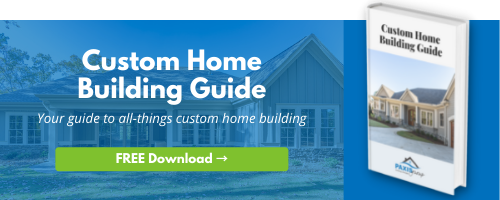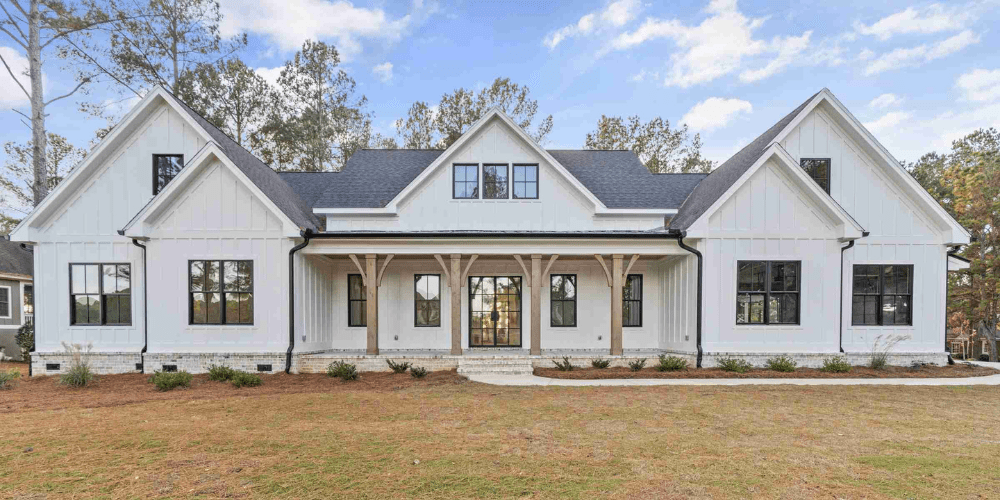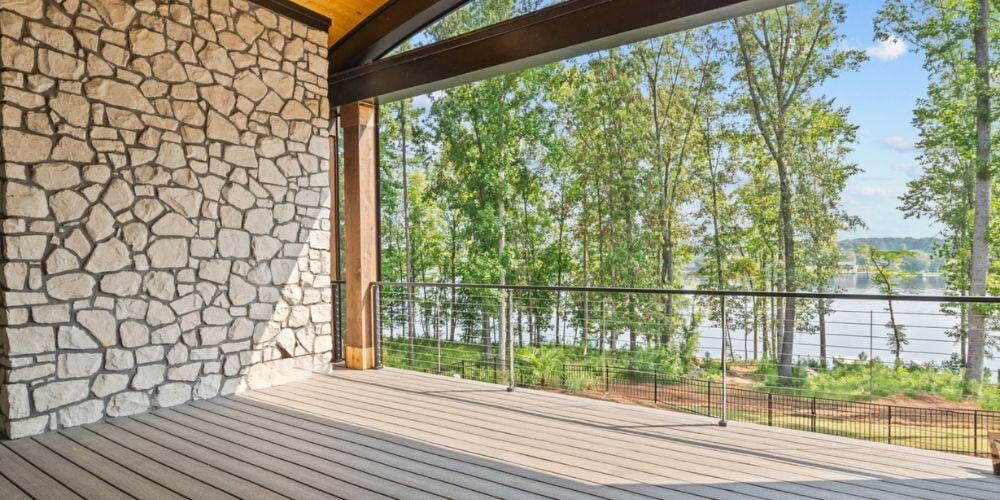Must-Have Age-in-Place Features to Include in Your Custom Home
- Heather Wojtas
- November 8, 2022
- dream home, home improvements
- 0 Comments
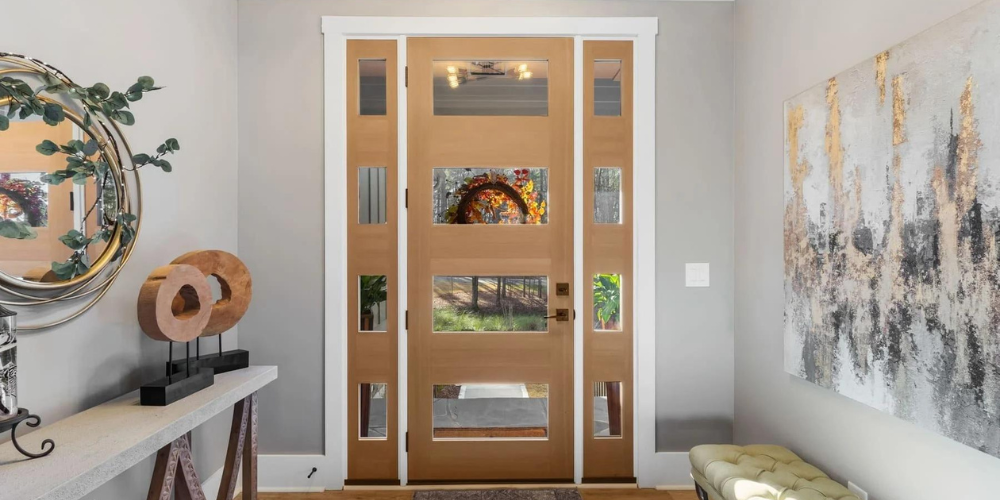
Family is important, and nowadays, more and more people want beautiful, functional homes that reflect that value.
If you're one of them, your parents or other relatives may move in with you soon so they can be close to family in their older years. Or, you may want to create a home where you will be safe, accommodated, and surrounded by happy memories as you age.
Either way, use these tips for aging in place comfortably and stylishly from PAXISgroup to get started.
But before we get into it, there's a key question we need to answer:
What is Meant by Aging in Place?
Aging in place means continuing to live independently in your own home rather than moving into a retirement community as you age. Your level of independence will vary based on your health.
To age in place, you need a home that is safe and accessible for those of all abilities since you never know if you'll be walker-or-wheelchair-bound sometime in the future. An easily walkable community with nearby stores is a plus.
How Do You Age Gracefully in Your Home? 10 Ideas From PAXISgroup
Finding a pre-built home that has all the features you or a loved one needs to age in place comfortably is almost impossible to do. That's why building a custom home is one of the best ways to ensure your home is elderly-friendly and ready for anything the future may hold.
Here are a few vital age-in-place features you'll want to include in your custom build:
Open Layout
Aging-in-place house plans must account for wheelchair use. Even if you or your family don't use one yet, it's always a possibility. One of the best ways to accommodate someone in a wheelchair is to opt for an open layout.
Open layouts are a must in design for older adults because they have fewer doors, corners, turns, and hard-to-navigate areas than closed floor plans; this makes everyday life easier for someone in a wheelchair. Imagine navigating several doorways, bulky furniture, or multiple rooms in a wheelchair to get from the living room to the bathroom. Sounds exhausting, right? An open floor plan ensures that doesn't happen. 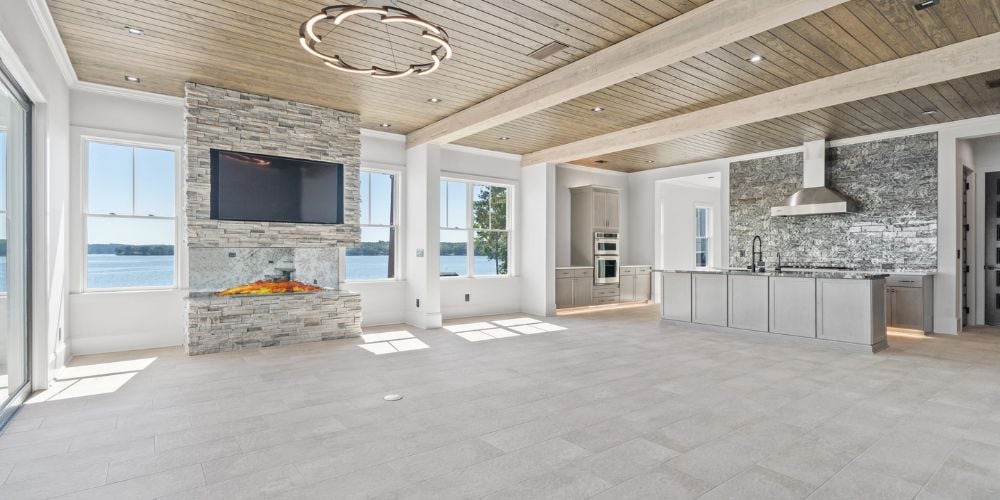
Enlarged Hallways & Doorways
Similarly, aging-in-place home plans need enlarged hallways and doorways for walkers, scooters, and wheelchairs. A standard door opening is around 24 inches; according to the Americans with Disabilities Act, accessible entrances should be at least 32 inches wide. Your hallways should be at least three feet wide — and four is even better! If you plan to put a side table or other furniture in your hallway, you'll want to make your halls larger than three feet because you need three feet of empty space for an accessible hallway. While fiddling with the doors, swap your knobs out for door handles, which are easier to use for those with arthritis.
Main Floor Bedroom & Bath
Stairs are dangerous for anyone — even more so for those with limited mobility. Eliminate fears of falling altogether by placing at least one bedroom and full bathroom on the main floor. Doing so will make starting and ending the day a more enjoyable hazard-free experience for everyone. We recommend creating an ensuite bathroom attached to the bedroom, so it's easy to get to the bathroom from the bed in the middle of the night. Also, for age-in-place bathroom design, ensure your space is large enough to accommodate a 360-degree turn by a wheelchair.
No-Lip Walk-In Shower
Bathrooms are one of the most accident-prone areas in the home, and showers are perhaps the worst offenders. With slippery wet tiles, getting in and out of the shower can be dangerous, especially if stepping out of a tub. Make your shower safer and accessible with a no-lip walk-in shower.
Getting to and from the shower is much easier without a curb to hop over. Plus, walk-in showers are the epitome of bathroom luxury. Go for one with glass doors, or try an open wet room (which has no doors) to open up your bathroom and show off your beautiful new tiles. While you're at it, install a shower bench — so someone can sit while bathing — and an adjustable, handheld showerhead that makes rinsing a breeze from any position. 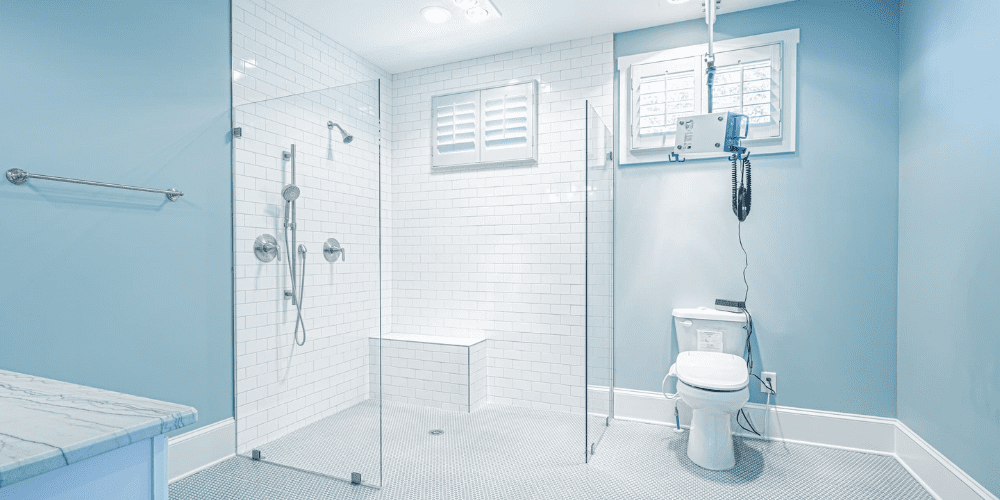
Bathroom Grab Bars
Before moving from the bathroom, we have to talk about grab bars. Since the bathroom is a fall-prone area, installing numerous grab bars — which double as towel holders — throughout the space can save you from an unfortunate trip to the hospital.
Create your age-in-place haven with this Custom Home Building Guide from PAXISgroup.
Adjustable Countertops
Make countertops and vanities accessible for someone in a wheelchair by lowering the height or opting for an adjustable one. The National Mobility Equipment Dealers Association recommends a countertop height between 28 and 34 inches. You should also keep at least 24 inches in height and 30 inches in width empty underneath to accommodate the girth of a wheelchair. It's also a good idea to round the edges of countertops to prevent sharp edges from injuring loved ones.
Nonslip Floors
Nonslip floors are an absolute must for live-in-place designs. Use materials like low-pile carpet, cork, rubber, and slip-resistant vinyl. Further slip-proof your floors by removing rugs (a trip hazard) and adding non-skid treads on carpets. Keep in mind that you'll want a surface that's both safe to walk on and easy to slide across with a wheelchair, walker, or scooter.
Ramps or Elevators
Stairs are a massive hazard. Avoid them altogether with a ranch-style house. But if your dream custom home has more than one story, consider installing an elevator to make getting from one floor to another simple. Ramp design for home entrances and exits is also a smart decision.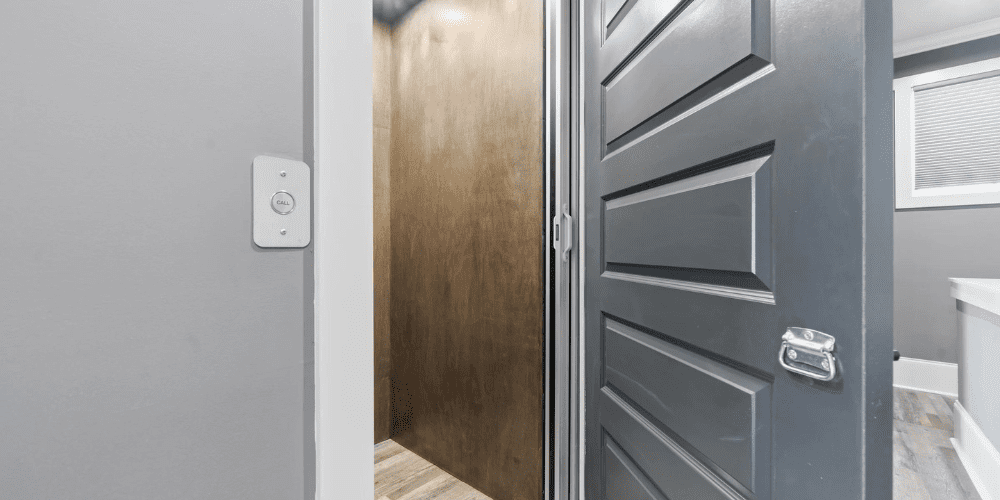
Heated Floors
The older you get, the more likely you are to become sensitive to the cold. When that happens, heated floors are a luxury; you'll be glad you invested in them! Whether you want them in the bathroom, bedroom, basement, kitchen, garage, or all of the above, heated floors are an excellent way to keep your home warm (after all, heat rises) and add extra comfort to your every day.
In-Law Suite
If you plan to have your parents or other older relatives move in with you, they may wish to have more independence. An in-law suite is a perfect solution! These suites are generally equipped with a bedroom, bathroom, and kitchenette and have an entrance and exit separate from the house's main doors. You can place your in-law suite in the basement or attic (but be mindful of stairs!). Even better, create an accessory dwelling unit on your property so your relatives can have their own small home near the main house.
Why Is Aging in Place Important? Creating a Home for Your Health
Aging-in-place is often more financially savvy than moving into a long-term care facility. But more so, being close to loved ones improves health and quality of life. Additionally, a home that facilitates comfort and safety as you and your family age leads to fewer health scares and a better life overall.
Don't wait until it's too late to create a home for aging-in-place. The right home brings happiness and good health; we can help you build it. Get started today with the custom home builders at PAXISgroup.
